Last Updated on December 8, 2023
If you enjoy a cup of coffee when you wake up, there are few things as frustrating as the realization that you have no filter. What are you going to do?
Before you dismay or run out to spend a small fortune on a wee cup of coffee from the area barista, consider the many alternatives and options that are in front of you!
No filter? No problem. Try these ideas to make coffee without a paper filter.
Instant coffee
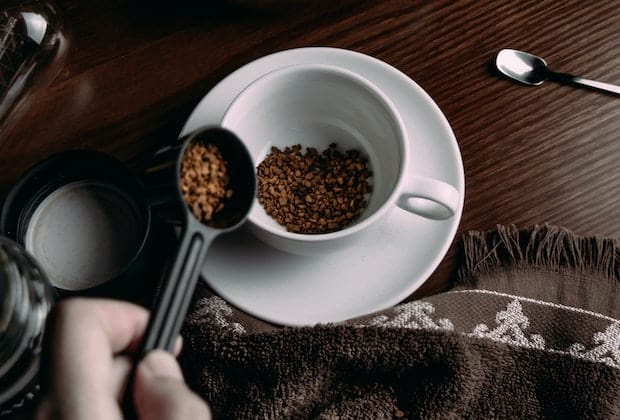
Your first choice is a no-brainer: Whip up a cup of instant coffee for a fast fix of caffeine. While this is not everyone’s preference, it is quick, easy, and a shelf-stable item that you should have in your pantry. Instant coffees have also improved dramatically in recent years. Instant coffee is sometimes called ‘Coffee crystals’—not to be confused with coffee powder. But more on that later.
French press
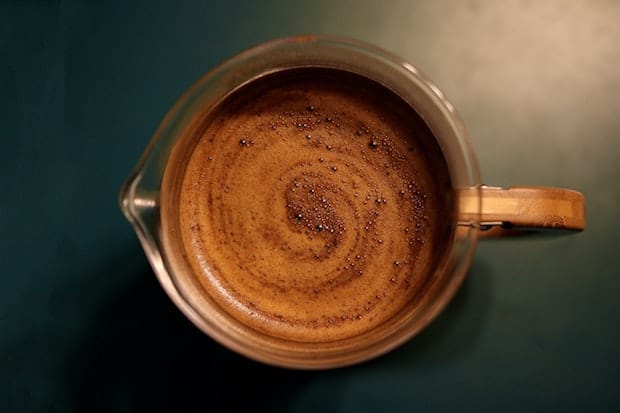
Make coffee with your French press if you do not happen to have a coffee filter. One of the great things about French press is that it allows some of the coffee oils into your cup, which gives your brew a nice mouth feel.
To use a French press, you need coffee grounds and boiling water, which you can heat on the stove, fire or microwave. Some regular users of their French press swear by an electric kettle, which heats water to a boil fast and conveniently.
Remove the strainer lid from your press and add the coffee grounds that you want for your desired amount of coffee. Add the boiling water and stir, then replace the lid and lower the strainer to the surface of the water. Let it steep for four our five minutes. Then, slowly push down to trap the grounds in the bottom of the press. Pour with the strainer pressed all the way to the bottom so the grounds do not reach your cup. Enjoy!
Cowboy coffee
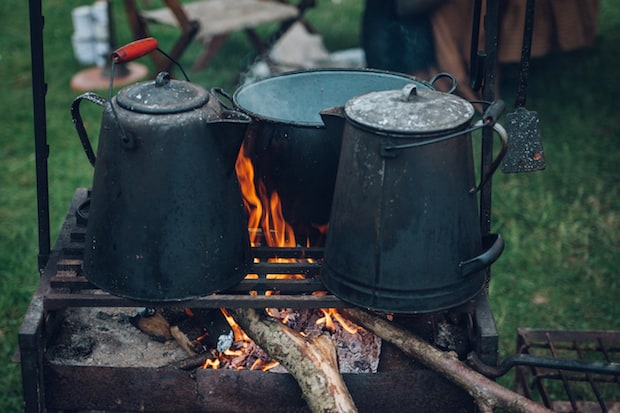
For coffee without a fancy French press or coffee machine, consider making yourself a cup of cowboy coffee. Cowboy coffee also uses boiling water and your coffee grounds, but without the straining. Instead, you bring the coffee to temperature on the stove or fire, pouring carefully to keep (most) grounds out of your coffee cup.
Make cowboy coffee with these tips:
- Add water to your pot or pan. Use a bit more than usual, as some will evaporate during cooking.
- Bring the pan to a boil.
- Boil water, add the coffee grounds—around two tablespoons per cup of water.
- Let the coffee and water boil until the grounds stop floating and sink to the bottom.
- Turn off the stove and cover your pot with a lid for a few minutes to finish steeping and settling.
- Remove the lid and serve carefully so as not to raise too many grounds from the bottom.
It helps to use a ladle to pour the coffee into the cup. This helps to keep the grounds at the bottom of the pot and out of your cup.
Dish towel or cloth napkin
Coffee filter substitutes can include many common household items, but make sure that they are clean and not treated with chemicals.
A warning about paper towels: Despite the fact that many laud using paper towels as makeshift coffee filters, this is not always the best idea. Paper towels are usually treated with chemicals that can affect the coffee’s taste. Plus, they can fall apart when subjected to hot water, creating a mess and sending grounds into your beverage.
A better coffee filter alternative is to use a clean bar towel, cloth napkin or dishcloth. Make sure you haven’t washed these in detergents or solutions that can influence the taste of your coffee. If you plan to reuse the cloth in the future, rinse it well after use and allow it to air-dry. A cheesecloth works really well, too.
Reusable filter
Another easy approach is to invest in a reusable coffee filter—a cost-efficient approach that is also easier on the environment than a paper filter. Depending on how much coffee you drink, this can cut down on waste and reduce your overall carbon footprint. These are not expensive to buy and can save you money on what you spend for paper filters over time.
Reusable tea bag
Other brewing ideas when you do not have a coffee filter include using a reusable tea bag. These are simple to fill and steep, plus they can last for more than one brew if you gently remove and rinse them when done. Steep these bags of grounds in boiling water, much like you would a good cup of tea.
Mesh sieve
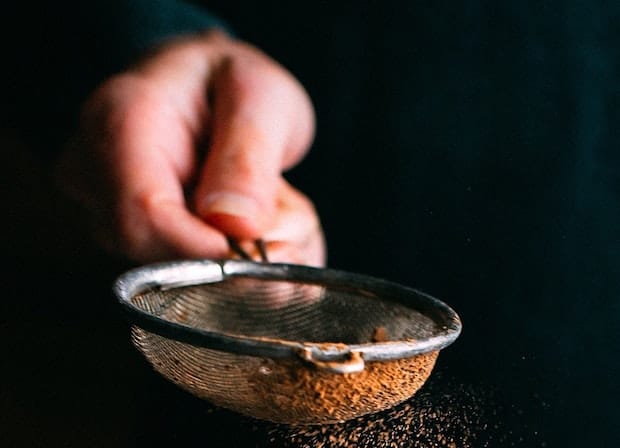
A fine mesh sieve can strain coffee and serve as a coffee filter substitute. Simply follow the instructions for cowboy coffee above and then slowly pour your coffee through the sieve to capture and separate the grounds.
You could also steep with the coffee inside the sieve, if the sieve is a good fit with your pot of hot water.
You may need coarsely ground coffee beans for this.
Sieves are handy for many household tasks. Make sure to keep one in your kitchen.
Nut milk bag
Do you make your own nut milk? Many people do, so using a nut milk bag to filter coffee makes sense. These types of bags are often made from cotton, hemp or nylon, and are designed for straining liquids. Depending on the type of nut milk bag you are using, it may not hold up to boiling water but it can be an excellent option for cold brew coffee.
Sock or stocking
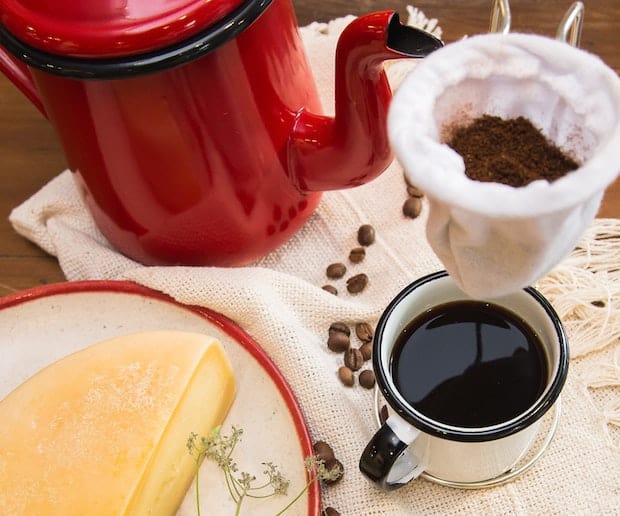
This one sounds a little weird, but why not use a sock or pantyhose? Make sure that it’s clean, of course, but this a great way to repurpose a stray, single or damaged stocking or sock.
First, put the ground coffee in the sock and secure the sock in a tall tumbler or other vessel to stabilize and support it as you pour in the hot water.
Leave the tumbler, sock, grounds and water to steep before slowly raising the sock and allowing the coffee to run out into the tumbler. Gently squeeze the sock as needed but be careful. That’s hot coffee!
Handkerchief
Brew coffee in your usual way but instead of a coffee filter, use a clean handkerchief. This acts like a napkin or paper towel would, but the tight weave of the woven cotton fabric makes a fine filter replacement as long as it’s free of detergents, soaps and starch.
Coffee powder
Coffee powder is basically coffee that has been ground into a fine powder instead of the typical grind that you use in your coffee maker. It resembles espresso powder but is even finer. There are a couple of distinct methods to create a great cup of coffee with no filter using this fine coffee powder.
Mud coffee
Mud coffee is often confused with cowboy coffee, but it’s a very different recipe. Mud coffee is thicker, and some would say richer in flavor. While both techniques will work when you do not have a filter on hand, mud coffee utilizes finer coffee powder and may even be easier to prepare.
First, you do not bring the water and coffee grounds to a boil, but rather keep the temperature below the boiling point. Also, do not cover and steep the coffee once the powdery grounds settle; pour in a cup immediately and serve. Any grounds will sink to the bottom of the cup as you drink it.
Turkish coffee
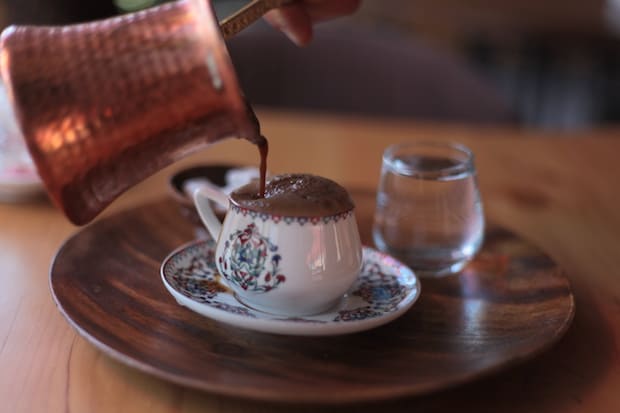
Turkish coffee has been around for centuries and requires no filter to enjoy. This is found widely throughout Middle Eastern countries and is typically made in copper coffee pots or vessels.
Traditional Turkish coffee is served in small cups that contain around 2-3 ounces of coffee.
The distinction between this type of coffee and others is that the coffee is never stirred during the brewing process, nor is it stirred as it is being consumed. That is, any sweetener and milk added is combined in the brewing pot with the coffee powder before cooking, and not stirred afterward. It is not common to add cream or sugar to a cup of this coffee before drinking.
When you order it in a coffee shop or restaurant, it’s often accompanied by cold water to cleanse the palate from this rich, strong coffee.
To make your own delicious Turkish coffee without a filter, follow these steps:
- Add approximately six ounces of water per person and a couple tablespoons of fine coffee powder per serving to your copper coffee carafe or other pot.
- Add sugar, if desired, at this point and stir to dissolve and combine with the coffee powder and water.
- Put the coffee pot over a medium heat until the coffee begins to foam.
- Remove from the heat before the coffee boils and skim the foam from the top.
- Add a spoonful of foam to each of your serving cups.
- Place the coffee pot back on the heat until it foams again; remove from the heat and pour carefully into the serving cups so that the foam rises and clings to the top of the cup.
- Allow the cups of coffee to sit and settle for a moment before serving.
- In Turkish tradition, do not stir the coffee during the foaming process or when serving it at the table.
You may enjoy adding a cardamom pod to the coffee mixture while brewing for a spicy kick that is commonly found in true Turkish coffeehouses and shops.
No coffee filter? Try one or more of these techniques to get your cup of coffee when you do not want to run out for filters. Consider investing in a French press or reusable filter for these types of situations, too, and you may find that you genuinely enjoy, and possibly prefer using these for your daily cup of joe.

